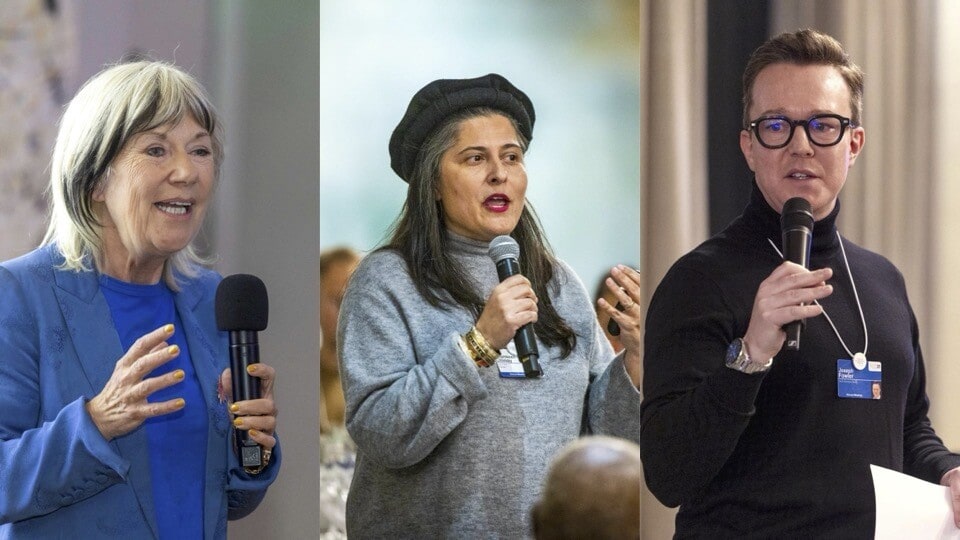How can we heal our cultural fractures?

Culture is always in motion: Sufi dancers perform in Pakistan Image: REUTERS/Akhtar Soomro
One night in Paris in the winter of 1999, I had a transformative experience listening to the music of Mehr and Sher Ali, Sufis from Pakistan. I wanted to find ways to bring to others that expansive feeling of belonging to the whole world and that’s what set me on the path to a career in the arts.
This was around the time that “world music” was becoming a major phenomenon. Globalization was enabling us to learn more about other cultures. I would spend hours in record stores in the world music section sampling music from everywhere. I discovered klezmer, bossa nova, Afrobeat, Gnawa and Mongolian throat singing, and fell in love with all of it. It was almost the year 2000, if we could just get through the Millennium Bug, everything would be fine.
Later as a student in New York post 9/11 I learned that heritage was a construct — a way for a people to express what made them unique. Nothing begins as heritage — a musical genre, like jazz or indeed Mongolian throat singing, starts as an avant-garde expression, breaking the mould, charting a new course, and in time, if enough of us identify with it, we embrace it as ours.
I learned later, while doing research in Bali, that even what we might consider as some of the most “authentic” art forms had more often than not been born through interaction with other cultures. Traditional Balinese music had, for example, been heavily influenced by the court music of Java; and in the 1930s, it was German and Dutch artists and ethnomusicologists who uncovered an old performative medicinal practice, Kecak, which they helped bring back as an art form in its own right and which is now firmly considered to be part of the canon of what is regarded as Balinese traditional art, including by the Balinese themselves.
Authenticity, it seems, is in the eye of the beholder. The wall-to-wall news coverage in France of Johnny Hallyday’s death and his state funeral this past December showed the immense influence of a musician who for so many French people represented what it meant to be French. Ironically it was the utopia of America that the French Elvis embodied that made him beloved to the French, while for Americans — for those who had heard of him — he was never French enough.
Painting identity and culture in linear terms does not tell the full story. Culture is inherently created through exchange; it is constantly in motion. It is undeniable that cultures have distinctive traits, but overstating or understating how they have evolved and how they are connected to the broader world brings great peril.
Currently we seem to be caught between two extremes. On the one hand, globalization means that cultures increasingly look and feel the same; on the other, nationalism is on the rise and it promotes visions of singular and pure identities. Both erode diversity.
As Steven Feld points out in his seminal essay, A Sweet Lullaby for World Music, there is an inherent tension in a term like world music that seeks at once to showcase the diversity of the world’s musical traditions and to categorize all of that diversity in one bucket. It’s as if one can state one’s openness to the world and consume — even appropriate or exploit — the culture of others without the need for reciprocation.
At the same time, identity politics and populist narratives use culture as a force to divide and to create linear narratives about who belongs and who does not. We build mental and physical walls. The social, political and economic fractures we are reckoning with today are first and foremost cultural fractures. They have their roots in the tension between alienation and belonging.
I wonder how to help my two young daughters navigate a world so different from the one in which I grew up. I want them to know they should be wary of categorizations and simplifications that create well-defined camps; that culture can be good as long as it is rooted in dialogue and dignity, but that it can turn sour when it becomes about exploitation or about separatism; that we must be open to revisiting what we think we know about our people and our history; and that if we want to create bridges for the future we must reflect on what it means to belong.
Those record stores I used to go to don’t exist anymore. Today we have Spotify tracks already prepared for us based on what we might have purchased elsewhere on the internet. World music playlists have been replaced by lifestyle and mood playlists. Maybe we think we know enough about the world now and that we should be more focused on ourselves and those who feel and live like us. Perhaps, in fact, it’s time for us to rededicate ourselves to listening to each other, intently and with a spirit of curiosity; to take a step back, suspend judgement and see how much of ourselves we can see reflected in others.
The World Economic Forum Annual Meeting 2018 in Davos will feature 40 cultural leaders dedicated to “Creating a Shared Future in a Fractured World”. Learn more here.
Don't miss any update on this topic
Create a free account and access your personalized content collection with our latest publications and analyses.
License and Republishing
World Economic Forum articles may be republished in accordance with the Creative Commons Attribution-NonCommercial-NoDerivatives 4.0 International Public License, and in accordance with our Terms of Use.
The views expressed in this article are those of the author alone and not the World Economic Forum.
Stay up to date:
Human Enhancement
Forum Stories newsletter
Bringing you weekly curated insights and analysis on the global issues that matter.
More on Arts and CultureSee all
Elena Raevskikh and Giovanna Di Mauro
October 22, 2025







